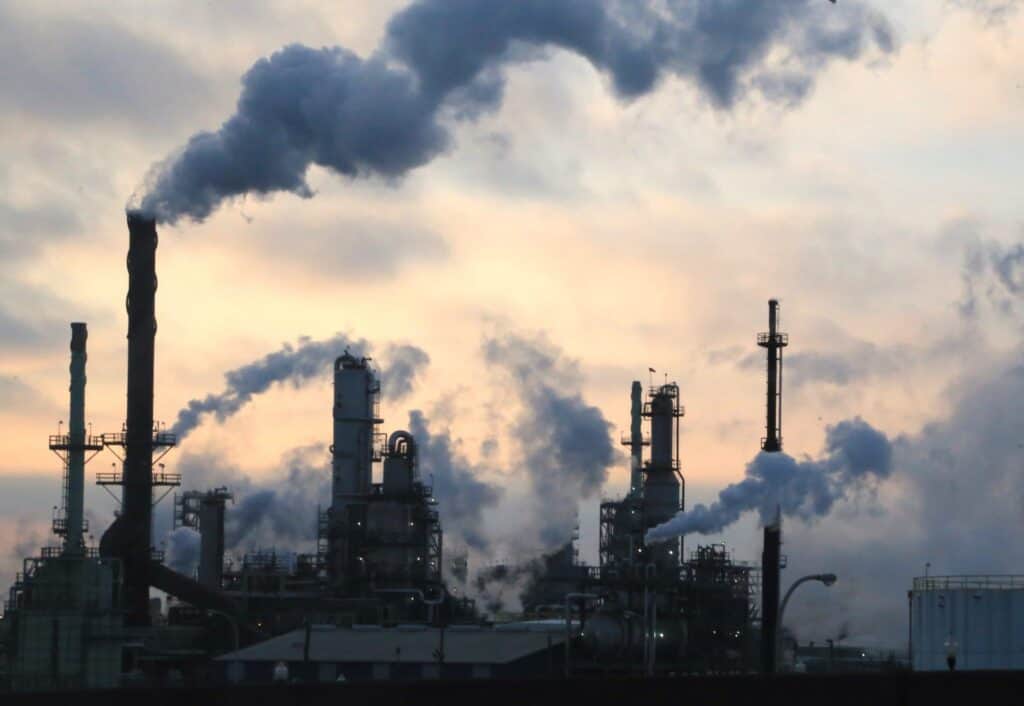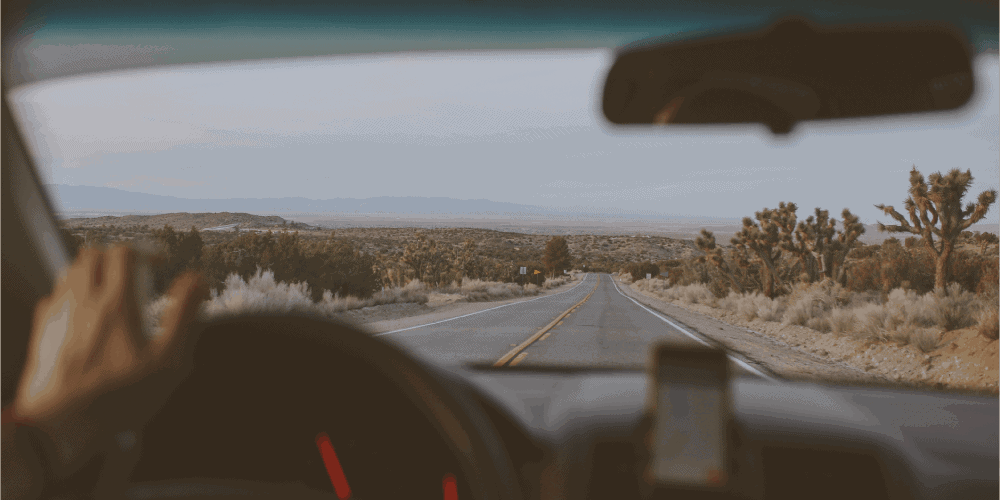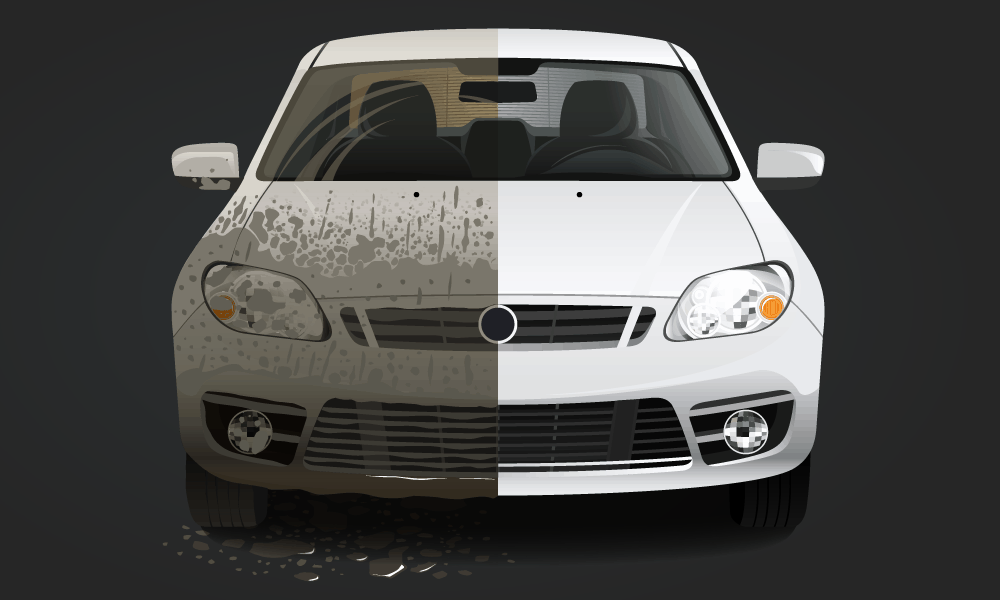I’ve lived in the Southwestern US pretty much my entire life. Besides a 13-year sabbatical to enjoy the road salt and snowy weather of the Denver metro area, my time has been spent in dry, warm weather climates, with blowing sand, tons of sunshine, and other elements that cause damage to car paint, windshields, and other exposed car parts.
A constant struggle us Desert Rats deal with taking care of our rides. Whether it’s our outdoor toys, daily drivers, or trucks for towing said toys, desert living comes with exposure to elements that wreck paint jobs, pit windshields, and other exterior components.
This introduces today’s blog topic quite well – how do you protect our car paint and other items in hot, dry weather regions?
Like any other environmental consideration, there are multiple variables that accelerate paint damage in the desert. There are several reasons why you should take extra measures to protect your vehicles, and multiple ways to accomplish this task. So, let’s explore these topics in the information below.
What are the Threats to Car Paint in Desert Regions?

There are two major sources of accelerated damage to automotive paint – exposure to UV rays and blowing sand. And guess what – the desert has these two ingredients in spades.
The car paint is applied as a primer (base coat), color pigment, and a clear coat (which protects and enhances the luster of the color beneath). Car paint has the luxury of a hard coating of protection.
Other items on your vehicle like plastic trim, windshields, headlamps, chrome, and other materials are not so lucky. Even that hard coating of protection on the paint will wear thin due to excessive exposure to these harsh environmental.
Acid Rain

Yes – this is real. Acid rain is caused by mixing air pollution with traditional precipitation. It is basically a low pH rain, with accelerated levels of hydrogen ions. If the pH balance is less than 5.6 on the scale, it’s considered acid rain.
Typically, it’s sourced when gaseous compounds of carbon, ammonium, Sulphur and nitrogen are released into the atmosphere. As these gases are absorbed into clouds and those clouds generate rain, acid rain is released upon us.
So – here is the million-dollar question – why is acid rain an issue in the desert specifically the Southwestern US? Well, because most of the smog is released in Southern California. Since most weather patterns move from west to east, as do winds in the upper atmosphere, those of us in the desert are the recipients of acid rain.
Bird Droppings

While we don’t have a ton of birds in the desert, metro cities in the Southwest have plenty. Bird droppings are highly acidic, as it’s combined with good old #1 and #2. That’s right – bird crap is combined with urine – so birds don’t have chronic diarrhea – it’s just the way their bodies are made.
So, when birds crap on your ride, the acids and other stuff causes it to stick to your vehicle’s surfaces including clear coats, window, yada – yada – yada. If it remains on the surface, the acids will start to burn and cause stains or permanent damage.
UV Rays

This one really doesn’t need an explanation. Desert equals LOTS OF SUN. These sun rays are extremely HOT and produces a lot of ultra-violet radiation – nuff said?
Bug Splatters

Drive down I-10 from Phoenix to Southern California and check out the front of your ride. If its not embedded with bug guts, it must have been raining. The desert is a haven for tons of different flying insects from grasshoppers, butterfly’s, moths, and much more.
Like any other animal, their insides contain a lot of acidic ingredients, like bird crap. As the bug is introduced to your car at 75 mph, well – typically the car wins.
Blowing Sand
You’ve heard of a sandblaster – right? Where tiny grains of silica are compressed in a hose, and sent through high-pressure compressed air – which removes contaminants from metals and other surfaces – right?
Well, when the wind is blowing in the desert, dust, dirt, and other small – yet very hard – materials impact your car at high speed. Add those late summer, monsoon season Haboob’s – like the image above into the equation, and you’ve got some serious paint damage potential.
While the initial damage is not as significant as a sandblaster, overtime it can cause a lot of damage – especially to clear coats, headlight covers, and windshields.
Why is it Important to Protect Car Paint in Hot & Dry Climates?

Due to the accelerated presence of these five causes of desert paint damage, it’s important to find creative ways of protecting car paint and other parts. Constant exposure to weather elements and other stuff will slowly eat away at these materials. Eventually, it’ll not only cause your truck, car or other vehicle to look like crap, but it can also lead to premature wear and tear.
Some items like windshields can become damaged – especially due to blowing sand. This leads to pitting, scratching, and ultimately, reduced visibility. As it rains (and yes, it rains in the desert – and when it does, it pours), you’ll have even more problems seeing. This can lead to potential vehicle accidents.
Exposure to desert climates can also accelerate damage to headlights – which again, reduce illumination and ability to see at night. Paint – well, simply look at all those cars, trucks, and SUVs with paint chips, peeling, and ultimately, rust.
5 Ways to Protect Your Vehicle from Desert Exposure
While there are several ways to protect your vehicle from damage due to desert weather conditions, some are better than others. Here are five of my favorite methods/techniques that can help reduce damage caused by desert climate conditions.
Car Covers

Consider this one as the cheapest, yet most inconvenient method of protecting your ride. Most car body damage happens when it’s just sitting outside, soaking up those rays, blowing sand, or waiting to get crapped upon. The car cover can reduce most of these standing hazards.
If you’re going to buy one – make sure it’s fitted for your vehicle. This will ensure a better and more secure covering, that won’t blow off as those desert winds pick-up.
Parking Structure

Following the car cover concept is making sure to park your vehicle in garages or at the minimum, under parking structures. Many desert communities offer parking structures at grocery stores, malls, and other public locations. It’s also common for apartment and town houses to have parking structures.
The key is to park the vehicle in garages or other covered parking facility whenever possible to reduce exposure to weather elements. The main item to protect against – especially during daylight hours, is to protect against UV exposure.
Direct sunlight – especially in the summer season, can rapidly accelerate paint degradation.
Apply Car Wax & Sealants

While the two items above are very effective when your vehicle is stationary, what about when you’re driving, traveling, or out and about. Beyond the UV exposure, this is the time when the other four items that can accelerate vehicle damage in the desert will occur.
This is when using car wax or sealants is a good starting point.
The solution to these problems is to apply some sort or protective coating or product directly onto the vehicle surface. One of the most traditional include car wax and sealant products. One is natural – the other is synthetic.
A high-quality car wax is natural in construction and is derived from a Palm Tree native to Brazil. As the sun or specifically, UV rays shine on that tree, a carnauba wax is secreted and protects those big leaves.
The same stuff is found in natural car wax and lasts about three months on the high-end. Waxing your car with synthetic car wax products can last a few months more.
The next level of ‘waxes’ is a paint sealant. This is a 100% synthetic product, that bonds on top of clear coats. When prepped and applied correct, it can hold up for about 9 months in desert climates.
Apply Vinyl or Paint Protection Film

The next level of paint protection is a vinyl wrap or paint protection film. Now, let me clarify up front – these are two different products made from different materials.
A vinyl wrap is a polymer product, but is typically colored, a bit thicker, and generally easier to apply. It can hold up to extreme heat, lots of rain, and other items that can damage vehicle surfaces in dry, hot weather climates.
The paint protection film or PPF is traditionally a clear, thinner substance. However, it’s self-healing, meaning if it’s damage by rock chips, it can be fixed with some heat application.
Usually people in the desert will apply PPF on the front grille and hood of their vehicle, as this helps to protect the surface from those materials.

PPF products like Clear Bra and vinyl can hold up for many years. The main problem with them is their lack of hydrophobic properties to repel water. Plus, you can’t really apply it to your windshield. This means that bird crap, bug guts and other items tends to stick easier. It can also make it more difficult to wash and remove.
There is a solution to this common issue – which is to apply a nano-ceramic coating on top of these materials.
Apply Nano-Ceramic Coating

Speaking of nano coatings. The final step in desert region paint protection is to apply a semi-permanent and extremely durable nano-ceramic coating. This product is intended to bond to multiple porous materials including glass, wheels, plastic trim, chrome plated plastic, carbon fiber, clear coatings, and of course, vinyl and paint protection film.
The nano-coating is essentially the quintuple threat of desert paint protection. It helps to block:
- UV Rays or sun damage
- Bird Droppings
- Bug Splatters
- Blowing Sand
- Acid Rain
When the coating cures, it can hold up against these harsh sandstorms and contaminants from three to five years. Many manufacturers of DIY nano-ceramic coatings even offer ceramic booster sprays, which provides an extra layer of protection on top of the hard coating.
The booster spray is usually a much lower percentage of SiO2 and will last about three months before it needs to be reapplied. By using the booster spray in conjunction with a high-quality nano-coating, you can extend the life expectancy much further.
It’s basically like applying a clear plastic wrapper over a hard candy shell that’s covering chewy goodness beneath.
Wrapping it Up

Living in the desert is awesome from October till April. The weather is great, golfing and motorsports are in high-gear, and you can pretty much find something to do outdoors while others are shoveling snow. However, the sun is continually shining, wind blowing, and birds and bugs still pose a threat to your valuable paint job and car parts.
The key to protecting cars in the desert is to use some high-quality paint protection products – like a DIY nano-ceramic coating. But, it’s just as crucial to take care of these coatings by washing your car as recommended, drying correctly, and using products that are formulated for these ceramic coatings specifically.
By doing so, you can protect your paint, headlights, wheels, and windshields for years.












